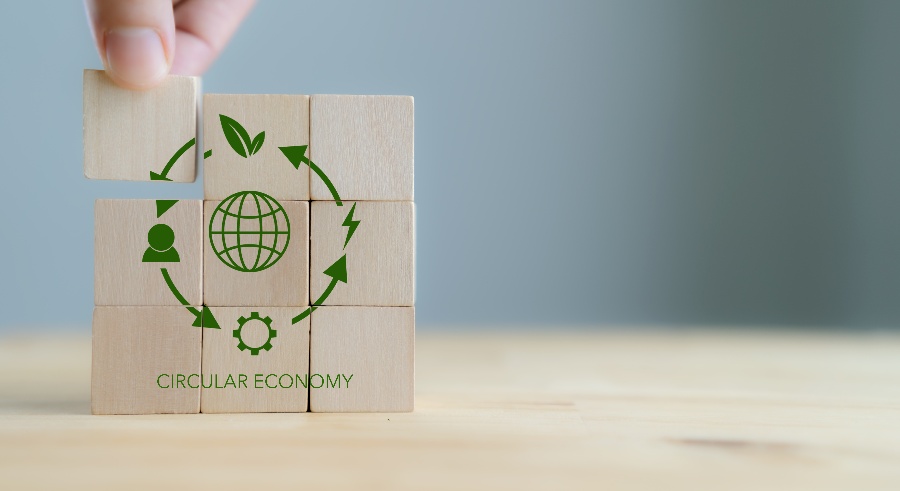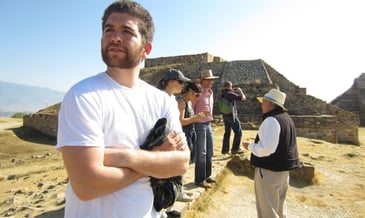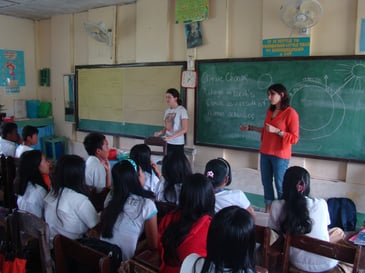The EU is Moving Toward a Circular Economy (And Why We Should, Too)

It’s difficult to comprehend the amount of waste created on the planet. What happens to the broken hand-me-down toy truck, the jeans that have been re-sewn six times, the patchworked mattress that no longer has any give? Where do these items go after they’ve been passed down and worn out to their breaking point?
In Western societies especially, we’re taught to throw away the majority of our goods when they stop serving their purpose or are no longer needed. Our economy follows a linear model, bolstered by mass production and disposable consumer products, where most of the goods produced eventually end up as waste in a landfill.
What if we could stop waste from being produced in the first place and give back to the earth more than we take? Through elimination, circulation, and regeneration, a circular economy is a tenet of sustainable development and one of the solutions to the worsening global climate crisis.
The Basics of Economic Theory
Understanding economic theories can help determine how the economy has evolved and how a circular economy is implemented. There is not a simple economic model definition, as there are different models that explore a multitude of behaviors and outcomes. Economic models are designed to answer questions about the function of the economy that can range from structural issues, “what-if” scenarios, supply and demand, and the economy’s ups and downs.
An extractive economy, also referred to as a linear economy, follows the take, make, and dispose model—an extremely unsustainable effort to both our resources and our environment. Some scientists even argue that an extractive economy is deadly. The idea of extracting natural resources, then creating products and energy, consuming the benefits, and disposing of non-recyclable waste is something that needs to become part of the past if we want to achieve a greener, cleaner earth.
Recycling Economy vs. Circular Economy
It’s no surprise that recycling benefits the environment, but what might surprise people is that it also benefits the economy. According to the 2020 Recycling Economic Information (REI) Report, recycling is responsible for 681,000 jobs, $37.8 billion in wages, and $5.5 billion in tax revenue across the United States. However, the recycling economy model may not be enough to overcome the extent of our environmental challenges.
Recycling is a road map detailing how we should deal with waste. But what if we avoided creating waste in the first place?
This is the foundation upon which a circular economy model operates. The circular economy model begins in the creation and production stages, instilling the principle of reducing material usage, being less resource-intensive, and using as much waste as possible to create new materials.
A circular economy is built on three main principles: eliminate waste production, circulate materials, and regenerate natural systems. The National Recycling Strategy has identified the need to implement a circular economy approach for everyone to reduce the overall creation of waste.
Martin Banks / Consumers in the Circular Economy
Circular Economy Examples
Many companies are starting to incorporate circular economy principles into their business model or are pledging to by a certain year. For example, some major companies like Nike and IKEA have a partnership with DyeCoo, a company that incorporates sustainable methods in the textile industry, which is known for producing large amounts of toxic waste. With their patented technology, DyeCoo uses CO2 instead of water, uses only pure dyes and reuses dye, no longer uses processed chemicals, and is energy efficient.
The circular economy has penetrated the air travel industry, too. Some airline companies have devised new ways to reuse, rebuild, and recycle retired aircraft parts. More than 11,000 aircraft will be retired in the next 10 years, however, up to 90 percent of those aircraft parts can and will be reused. This is a big step in the right direction for the circular economy mindset.
How Companies in the EU Are Embracing a Circular Business Model
In March 2020, the European Union adopted a circular economy action plan to help curb climate change and create a greener earth. They accelerated their ambitions towards a transition using a regenerative growth model instilling the idea to give back to the planet more than we take and to reduce their overall consumption footprint. Ecodesign Directive and the EU Ecolabel are just two tools to assist and regulate energy efficiency and reduce impact.
The EU garnered support for the shift to a circular economy by showing how this change would empower consumers through access to reliable information about a product at the point of sale. The EU is currently proposing a new law that requires companies to include information on the products being sold, such as product lifespan, ways to replace or repair items, and manuals to strengthen consumer trust. This will set stricter requirements for businesses to include with their products. The EU will also require businesses to be transparent about their production footprint methods.
So far, Amsterdam is a global leader in the shift to a circular economy, with its goal to become a fully circular city by 2050. Amsterdam’s circular business model revolves around three sectors: food and organic waste streams, consumer goods, and the built environment. Becoming one of the world’s first circular cities, we can expect Amsterdam to lead the way and create a roadmap in converting to a more circular focused world.
Making the Circular Economy a Reality in the U.S.
As the U.S. looks to match the EU’s progress in maintaining a circular economy, there is a growing need for environmental experts, creating a lot of job openings in sustainability.
To reduce waste, we need qualified scientists who study the effects of waste on our environment, environmental educators to alert the public, and policymakers to legislate change based on actual data. And finally, we need pioneers and developers to create incentives for businesses to return more to the earth than what we take from it.
Bard's Graduate Programs in Sustainability encourage, challenge, and provide our students with the tools needed to change the rules, change the game, and change the mindset of the country and beyond through policy, business and environmental education. Understanding the history and the possible future of environmental policy in the United States is the first step.
We need more people ready to challenge the status quo and present a plan to change the world. Are you ready to be a part of the change?





